The HO scale Little Joe electric locomotive from MTH Electric Trains features remote opening couplers, operating pantographs, and sound effects. The locomotive includes the MTH Digital Command System that runs on DCS, DCC, and DC layouts. See and hear the Little Joe run on our model train layout. […]
Section: Modeling
Buffalo Creek & Gauley
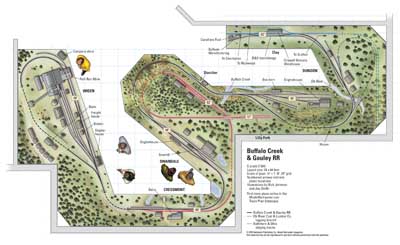
Name: Buffalo Creek & Gauley Layout designer: Brooks Stover Scale: S (1:64) Size: 24 x 44 feet Prototype: Buffalo Creek & Gauley Locale: West Virginia Era: 1958 Style: linear walkaround Mainline run: 100 feet Minimum radius: 32″ (visible track), 24″ (hidden track) Minimum turnout: no. 6 Maximum grade: 11-1/2 percent (BC&G), 2 percent (ERC&L) Click […]
Delaware & Hudson Sonnyvale Branch
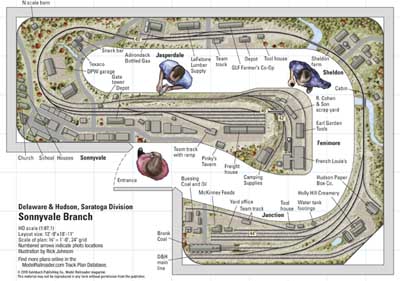
Name: Delaware & Hudson Sonnyvale Branch Layout designer: Kip Grant Scale: HO (1:87.1)Size: 12′-9″ x 18′-11″ Prototype: Delaware & Hudson Saratoga SubdivisionLocale: Eastern New YorkEra: early fall, 1962Style: walkaroundMainline run: 45 feetMinimum radius: 18″ Minimum turnout: no. 4 Click on the link to download the PDF of this track plan. […]
Reading Co., Shamokin Division
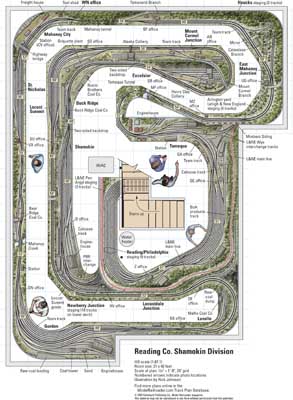
Name: Reading Co., Shamokin Division Layout designer: Jim Hertzog Scale: HO Size: 30′-6″ x 40′-0″ Prototype: Reading Co. Locale: eastern Pennsylvania Era: 1952-1957 Style: linear walkaround Mainline run: 285 feet Minimum radius: 30″ Minimum turnout: no. 4 Maximum grade: 2.6 percent Click on the link to download the PDF of this track plan. […]
Allegheny Midland
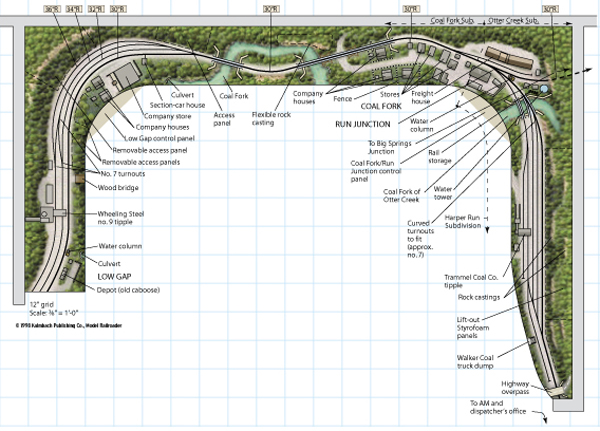
Track plan at a glance Name: Allegheny Midland (Coal Fork Extension) Scale: HO (1:87) Size: 13 x 19 feet Prototype: free-lanced, based on coal branches of the Chesapeake & Ohio and Virgnian Period: 1957 Style: walkaround Minimum radius: 30″ Minimum turnout: no. 6, handlaid to fit Originally appeared in the June 1998 issue of Model […]
Erie RR at Herbton
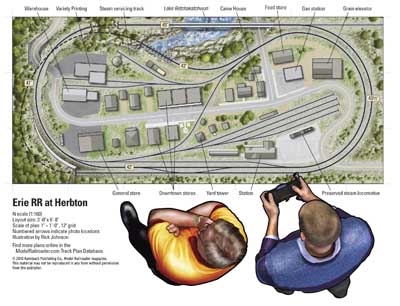
Name: The Erie RR at Herbton Layout designer: Clay Deeds Scale: N (1:160) Size: 36″ x 80″ Prototype: Erie RR Locale: Northern Ohio Era: 1950s Style: tabletop Mainline run: 33 feet Minimum radius: 11″ Minimum turnout: no. 5 Click on the link to download the PDF of this track plan. […]
The Huron Terminal
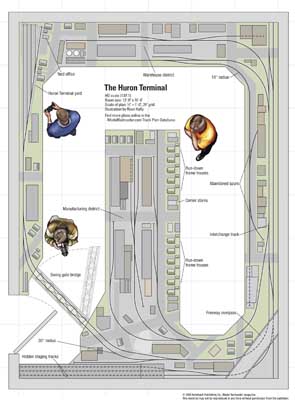
Name: The Huron Terminal Layout designer: Mark Olstyn Scale: HO (1:87.1) Size: 12′-0″ x 16′-6″ Theme: urban switching Locale: freelanced, inner city Era: 1990s Style: walkaround Mainline run: 46 feet Minimum radius: 18″ Minimum turnout: no. 6 Maximum grade: none Click on the link to download the PDF of this track plan. […]
How to make stairs in half inch scale
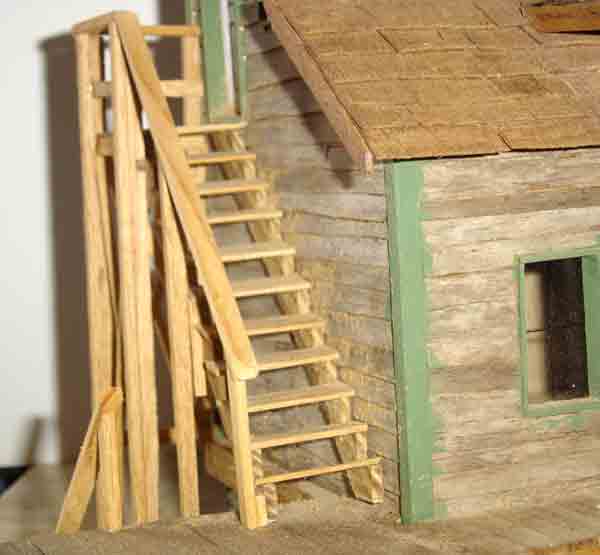
These stairs look complex but are surprisingly easy to construct using the author’s method. They add lots of character to structures. Add stairs to your structures with this step-by-step guide by Larry Elsenheimer! […]
Video: Broadway Limited Imports Paragon2 T-1 4-8-4
This upgraded Reading T-1 4-8-4 steam locomotive from Broadway Limited Imports includes the firm’s new Paragon2 Digital Command Control (DCC) sound decoder. The HO scale model also includes puffing smoke. Watch us run the locomotive on the Model Railroader club layout. […]
Video: Kip Grant’s HO Delaware & Hudson Sonnyvale Branch
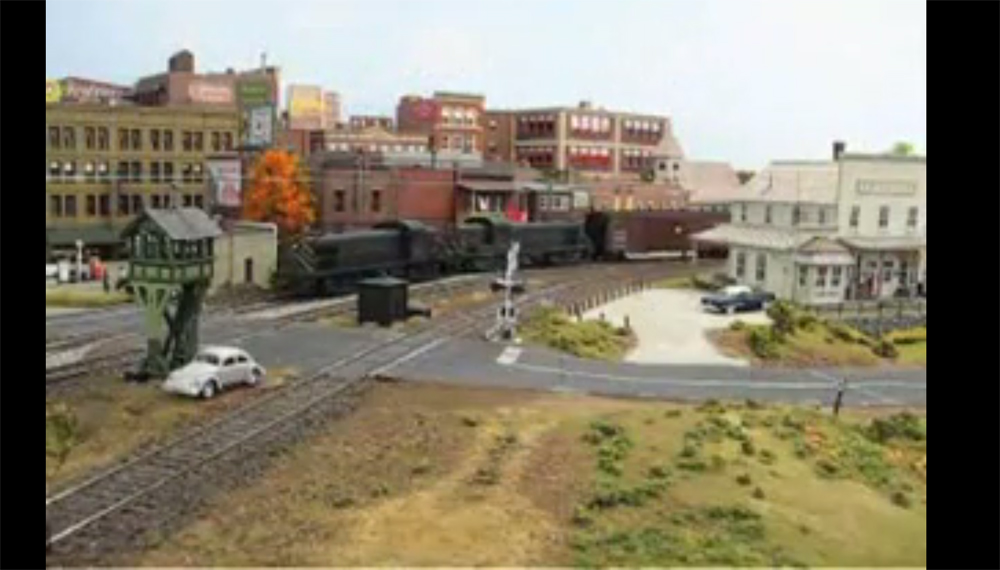
Having trouble viewing this video? Please visit our Video FAQ page Kip Grant’s HO scale layout is set in eastern New York in the early 1960s. In this video you’ll see trains running through superdetailed scenes. You can read more about Kip’s Delaware & Hudson HO layout in Great Model Railroads 2011. […]
Video: Kip Grant’s HO Delaware & Hudson Sonnyvale Branch

Having trouble viewing this video? Please visit our Video FAQ page Kip Grant’s HO scale layout is set in eastern New York in the early 1960s. In this video you’ll see trains running through superdetailed scenes. You can read more about Kip’s Delaware & Hudson HO layout in Great Model Railroads 2011. […]
Video: Kip Grant’s HO Delaware & Hudson Sonnyvale Branch

Having trouble viewing this video? Please visit our Video FAQ page Kip Grant’s HO scale layout is set in eastern New York in the early 1960s. In this video you’ll see trains running through superdetailed scenes. You can read more about Kip’s Delaware & Hudson HO layout in Great Model Railroads 2011. […]
